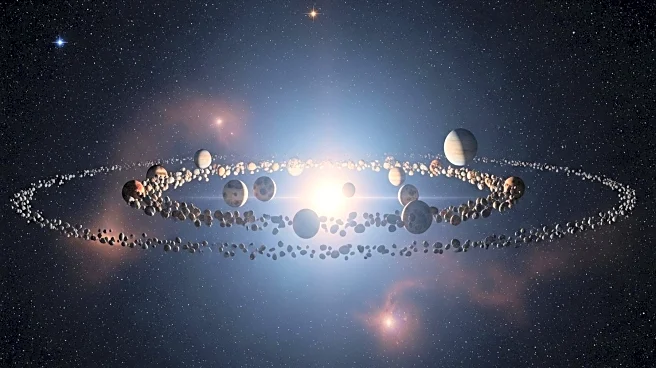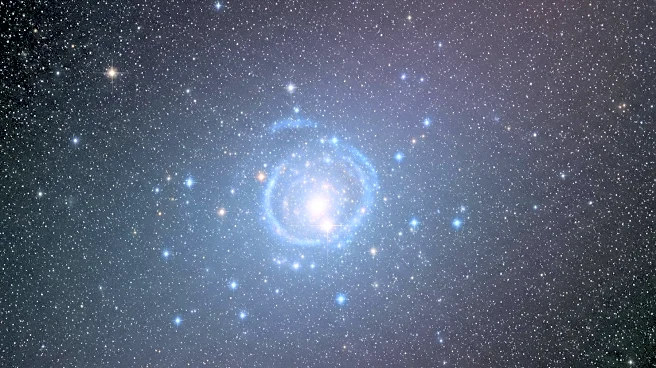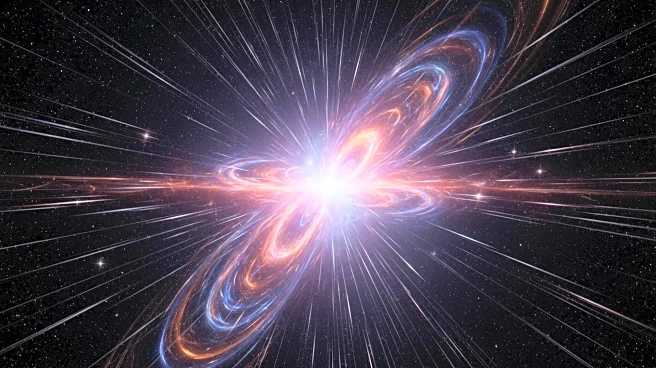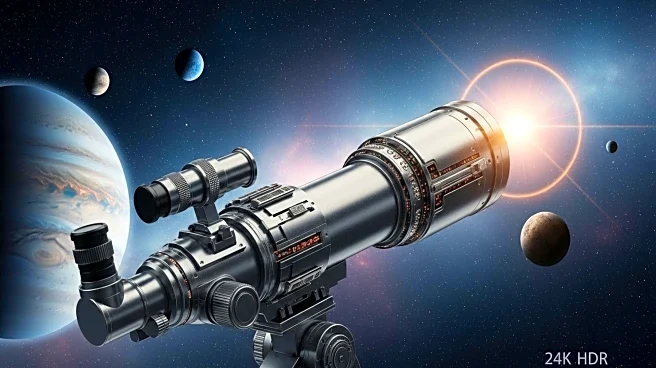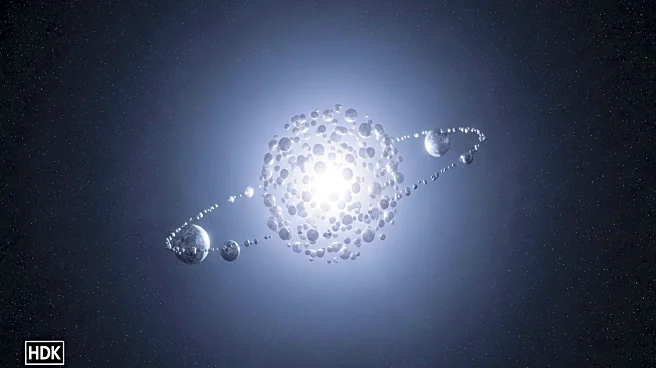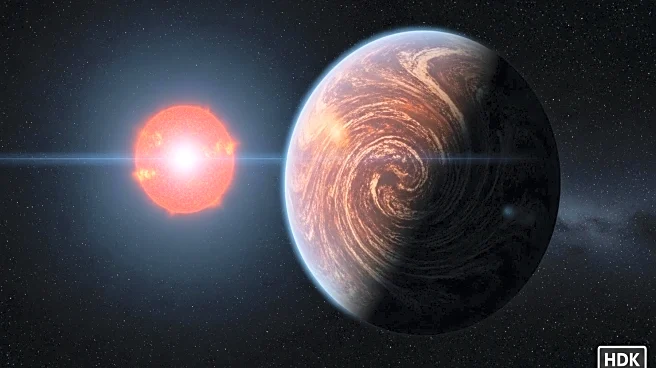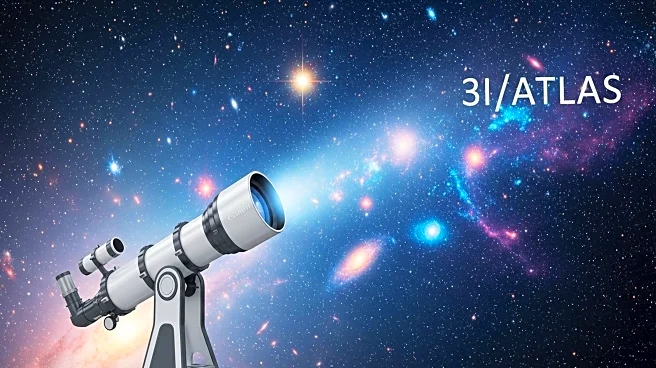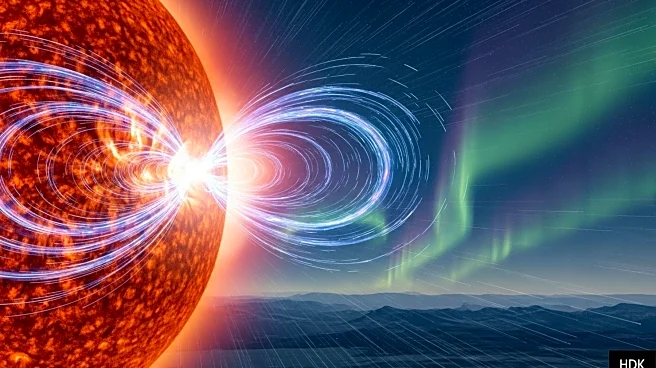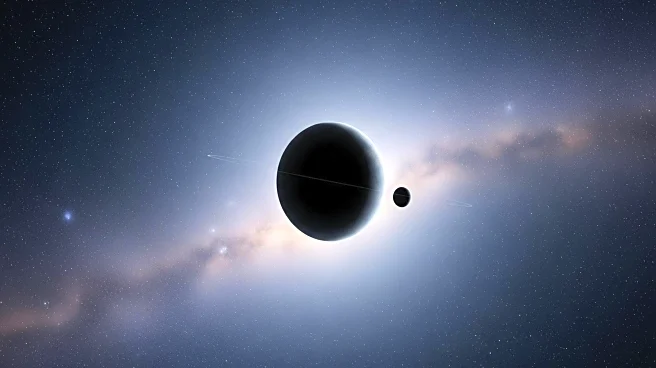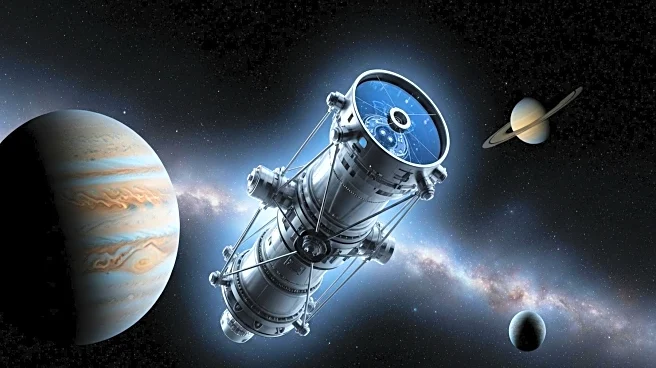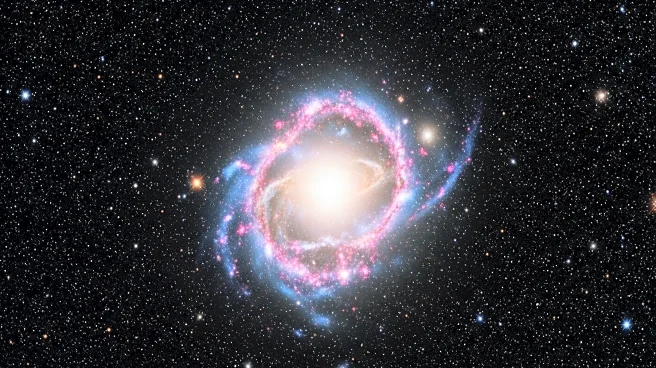What is the story about?
What's Happening?
Astronomers have identified the building blocks of planets, known as 'pebbles', around two young stars, DG Tau and HL Tau. These pebbles, which are small solid chunks, have been found in protoplanetary discs far from the central stars, at distances similar to Neptune's orbit. This discovery was made using the UK's e-MERLIN radio telescope network, which detects radio waves emitted by these pebbles. The findings suggest that the basic ingredients for planet formation are already present in these distant regions, potentially leading to planetary systems larger than our own solar system. The research is part of the PEBBLeS project, which aims to understand the early stages of planet formation.
Why It's Important?
The discovery of planet-building pebbles in distant regions of protoplanetary discs challenges existing models of planet formation and suggests that planetary systems could be more common and diverse than previously thought. This has significant implications for our understanding of the universe and the potential for finding other planetary systems similar to our own. The research also highlights the importance of advanced radio telescopes like e-MERLIN in uncovering previously hidden stages of planetary evolution. The findings could lead to a reevaluation of how planets form and the conditions necessary for their development.
What's Next?
The ongoing PEBBLeS project will continue to investigate the distribution of solid material in protoplanetary discs, providing further insights into the early stages of planet formation. Future observations with the Square Kilometre Array (SKA) telescope, currently under construction, will allow scientists to study hundreds of planetary systems across the galaxy, potentially leading to new discoveries about the formation and diversity of planetary systems.
AI Generated Content
Do you find this article useful?
